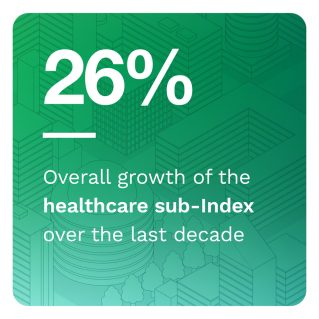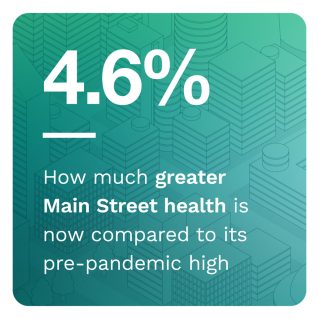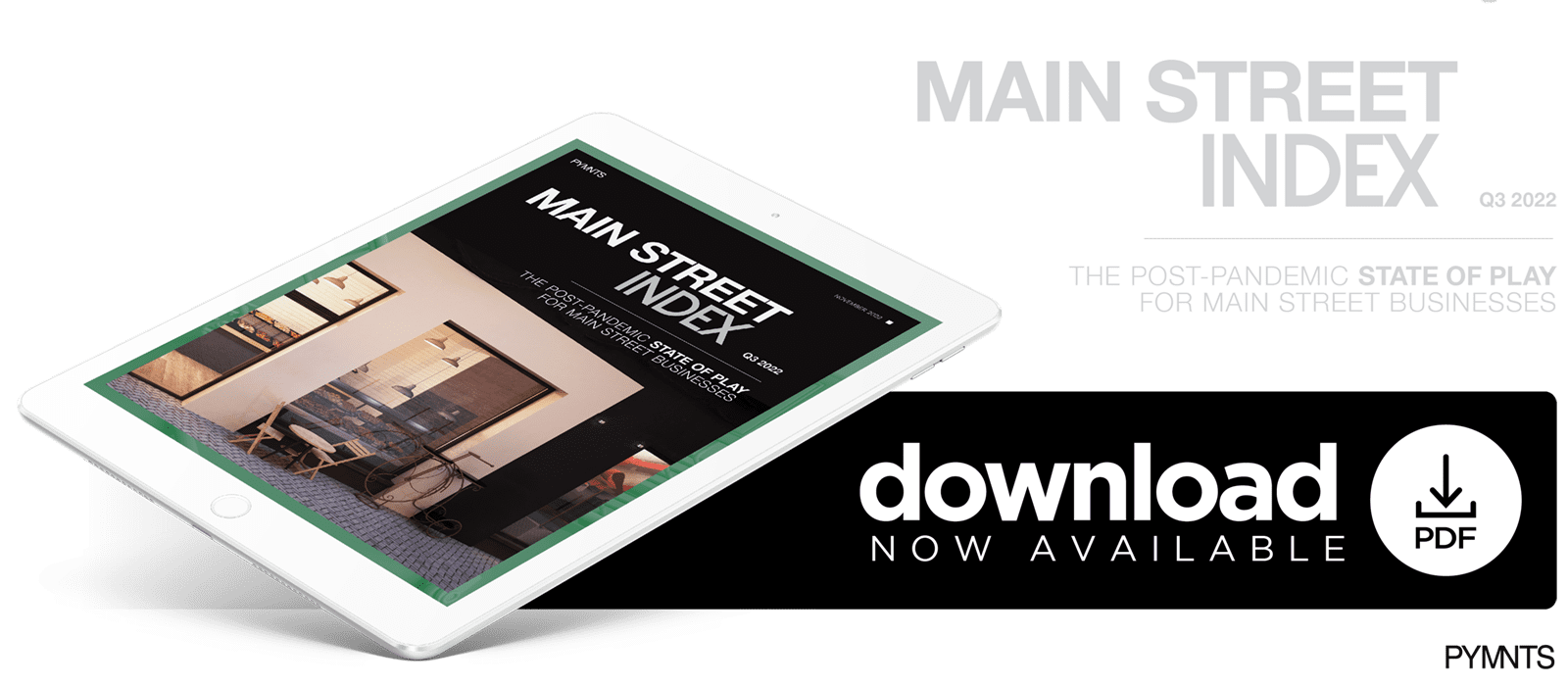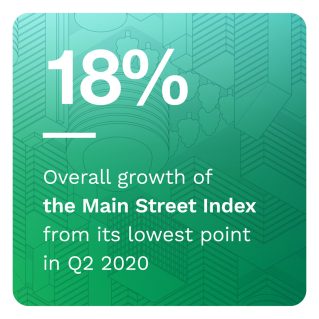Retailers Lag Broader Main Street Business Recovery in Q3

The small- to medium-sized businesses (SMBs) on Main Street, USA, were some of the hardest hit in March 2020, and pandemic recovery, though swift, has stagnated. These SMBs’ index scores have climbed nearly 18% from their Q2 2020 low, but quarter-over-quarter growth has slowed to just 0.7%.
This is on par with United States gross domestic product growth in Q3, which reached just 0.6%. The 3.7 million SMBs that line Main Streets across the country can serve as harbingers for the U.S. economy at large, and this slowed growth could be indicative of looming financial distress.
“The Main Street Index Q3 2022: The Post-Pandemic State Of Play For Main Street Businesses” draws on data from the Quarterly Census of Employment and Wages, econometric analysis and modeling techniques to determine the overall health of some of the United States’ most vital businesses. This Index reviews how inflationary pressures, climbing interest rates and other economic challenges have affected consumer sentiment and Main Street SMB growth as the country prepares for post-pandemic life.
• Retailers on Main Street lag in sectors like personal services, where digital substitutes are an unlikely source of competition.
Main Street retail SMBs continued their long-term decline this quarter, as severe inflationary pressures impact consumer sentiment. Some Main Street SMB segments, such as professional services and healthcare, are performing better than ever, while others, such as personal services and fitness, have lost momentum. Retail SMBs on Main Street are stagnating, struggling to compete in an increasingly digital-first sector.
 • Wage volatility and labor shortages continue to challenge Main Street SMBs’ ability to grow profitability.
• Wage volatility and labor shortages continue to challenge Main Street SMBs’ ability to grow profitability.
At mid-pandemic lows, wages and employment had fallen 43% and 48% annualized, respectively. Both factors have rebounded, but wages have been experiencing more volatility, and the spillover has affected employment. Wage volatility, labor shortages and inflation are impacting Main Street SMBs’ ability to remain profitable and grow.
Online shopping, inflationary pressures and labor challenges have greatly affected the state of play for Main Street SMBs looking to gain their footing in a world free of pandemic restrictions. This Index examines how these and other hurdles are affecting Main Street SMBs’ Index scores, which segments are still hurting and what this means for the overall U.S. economy.
To learn more about how Main Street SMBs are faring despite boosted online shopping, gloomy consumer outlooks and high inflation, download the report.


